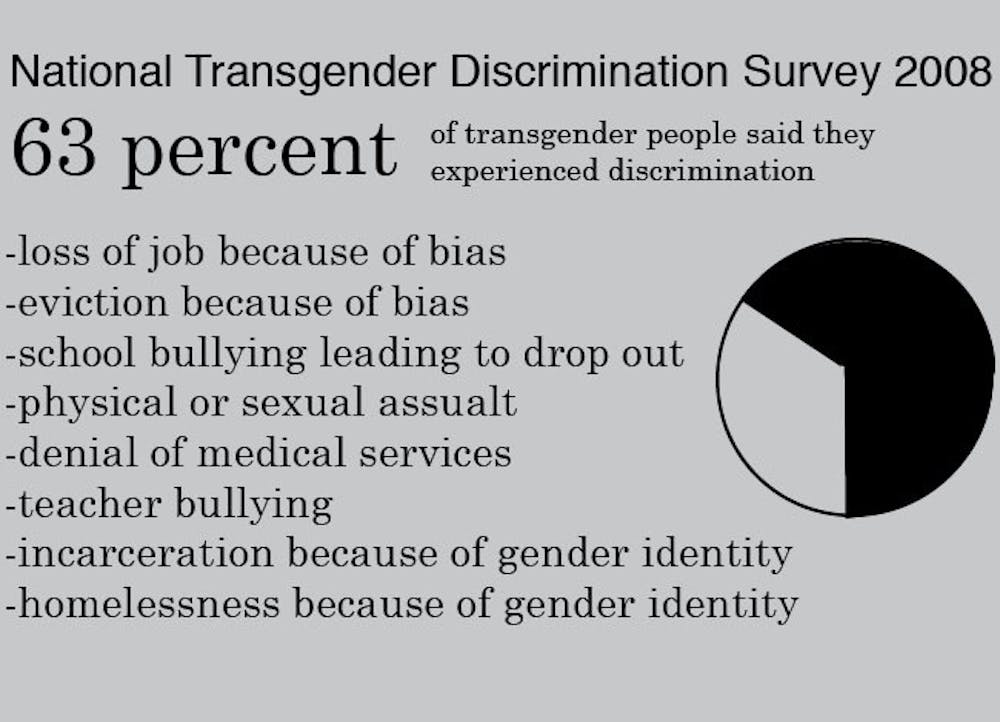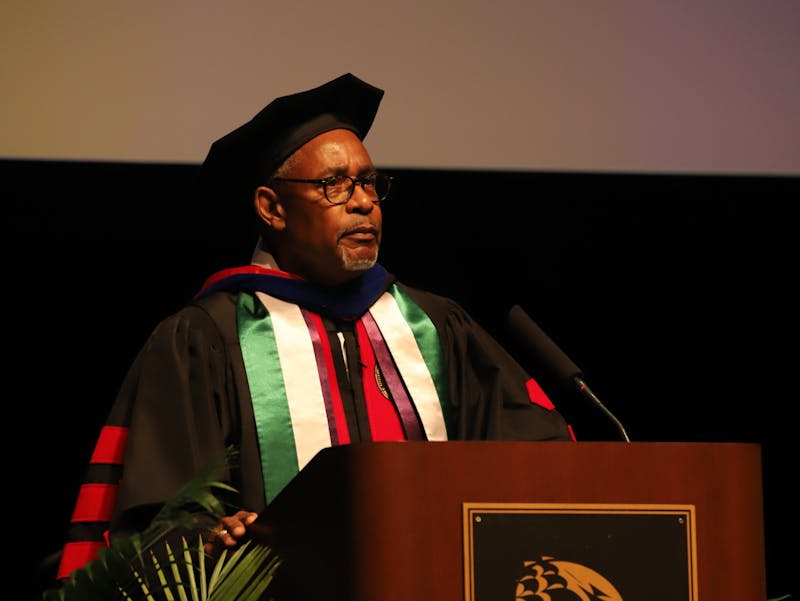“If you are out as transgender you fight every day. It gets pretty tiring,” said author Asa Frederick, speaking from experience. “I choose to stand out every day.”
The daily fight Frederick and others go through unravels everywhere from the schoolyard to the street, where it can end in bloodshed and death. Frederick, who formally went by Natalie, spoke from behind his thick ash-colored beard to dozens of Shippensburg University students and faculty members in the Grove Forum on April 5 about that fight.
Frederick was once the instructor of a yoga studio, but when he came out as being transgender, his life changed. In the six months following his coming out, he had lost all of his students, he said. But that was not when his part of the fight first started.
He began his battle when he was a child, always feeling he was a boy in a girl’s body. Frederick said the first time he really felt comfortable since hitting puberty was when he took his first dose of testosterone — he was 27. He had one surgery to remove his breasts and said he has no intentions of having any more.
“Any surgery you have does not make you any less male or female,” Frederick said, insisting that gender identity is not about a person’s physical appearance, but how each person identifies themself.
In essence, being transgender is as simple as not feeling comfortable with the gender that was assigned at birth, he said. But in practice, there is nothing simple about being transgender.
There is nothing simple about the National Center for Transgender Equality’s (NCTE) report that says 78 percent of transgender students from kindergarten to 12th grade are harassed because of their identity. There is nothing simple about 35 percent of those students being physically assaulted because of who they are. And it does not end in school, Frederick said. Harassment, discrimination and legal restrictions threaten the lives and liberties of transgender people every day.
At least 22 women were murdered for being transgender in 2015, Frederick said, noting that 20 of them were not white. The women ranged in age from 20 to 66, and they died after being stabbed, shot or beaten. In every state except for California, a person charged with murdering a transgender person can use “trans panic” as a defense, Frederick said. That means that people can legally use the argument in court that they killed a transgender person because they were shocked to find out that person was transgender.
“It’s OK you killed a transgender person because you were surprised they were transgender,” Frederick said, mocking the argument. “The fact that you can argue that in the court of law is disgusting.”
The fight for transgender people is about equality. Frederick just wants to live his life, he said, and tried to do just that. Then he heard something that became a call to action for that fight.
“I just stopped telling people I was trans[gender]. I had too much else going on,” he said. But then he learned of a few statistics that pushed him to become an advocate for transgender equality.
A 2011 NCTE study found that 41 percent of transgender people attempted suicide at some point in their lives, compared to 1.6 percent of the general population. The study reported that wide-spread discrimination and bias was persistent, and the structural racism that affects those who are black and transgender, was especially devastating.
“What it said about our population was heartbreaking,” Frederick said.
The discrimination transgender people face includes harassment at work, being denied housing and jobs, losing employment and a complicated fight to use a public restroom. But they also face sexual assault, Frederick said, once again speaking from experience.
Of the challenges Frederick goes through one of the most frustrating is having to go to the hospital, he said. That is because of the way the staff treats him, recalling one instance in particular that offended him. After two weeks of suffering from extreme illness he finally went to the hospital and faced a barrage of 15 nurses who wanted to see him, just because he is transgender, he said. The nurse that was supposed to take blood kept missing his vein with her needle because her hand was trembling out of anxiety. Frederick said he ends up being the one who has to calm the staff down so they can do their jobs.
“I was sick and comforting the people who were supposed to help me,” Frederick said of his experience.
Some of people’s problems with communicating with or respecting transgender people is that the culture has stigmatized people who are not clearly one gender. This is known as binary gender, Frederick said, explaining that most people think of gender as either being male or female. People who have physical characteristics of one gender, but identify as another, is not an easy concept for some people to accept.
The lack of gender conformity can be taken as an assault on masculinity in society, thus giving people a reason to discriminate, Frederick said. Transgender people sometimes cannot even find support among the gay, lesbian and bisexual (GLB) community, because transgender people are considered to be too extreme. This happens, Frederick said, when the GLB community is fighting for legal equality and thinks that including transgender people in the legislation will compromise their own fight.
Despite how tiring the daily fight can be on transgender people, there is growing support for the cause, Frederick said. Though there is much progress to be made for equality, a lot has changed for the better in the last 20 years.
“There is hope,” Frederick said, of the fight. “Things are getting better."




The Slate welcomes thoughtful discussion on all of our stories, but please keep comments civil and on-topic. Read our full guidelines here.